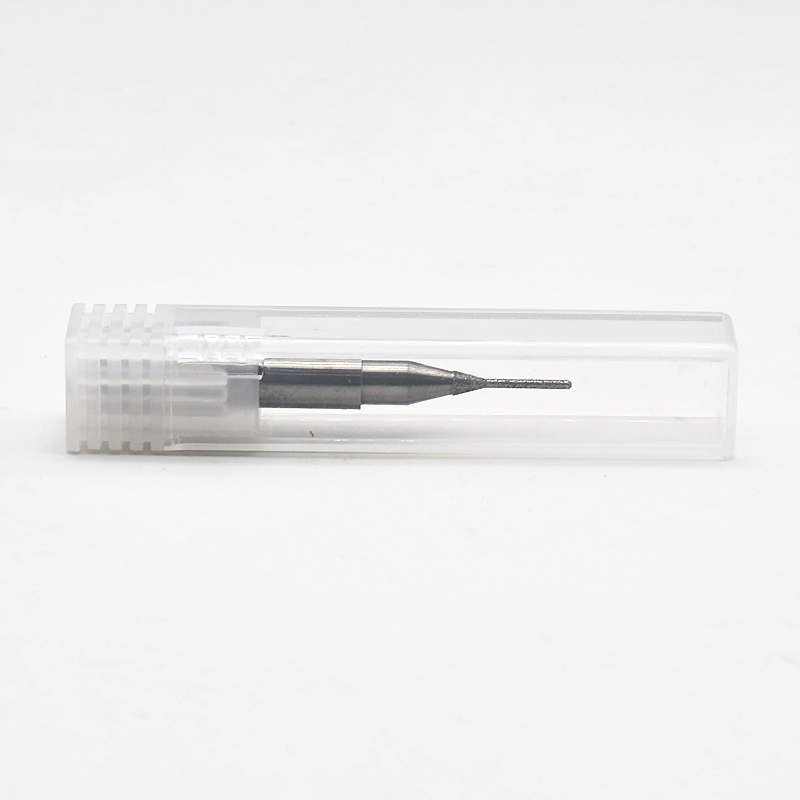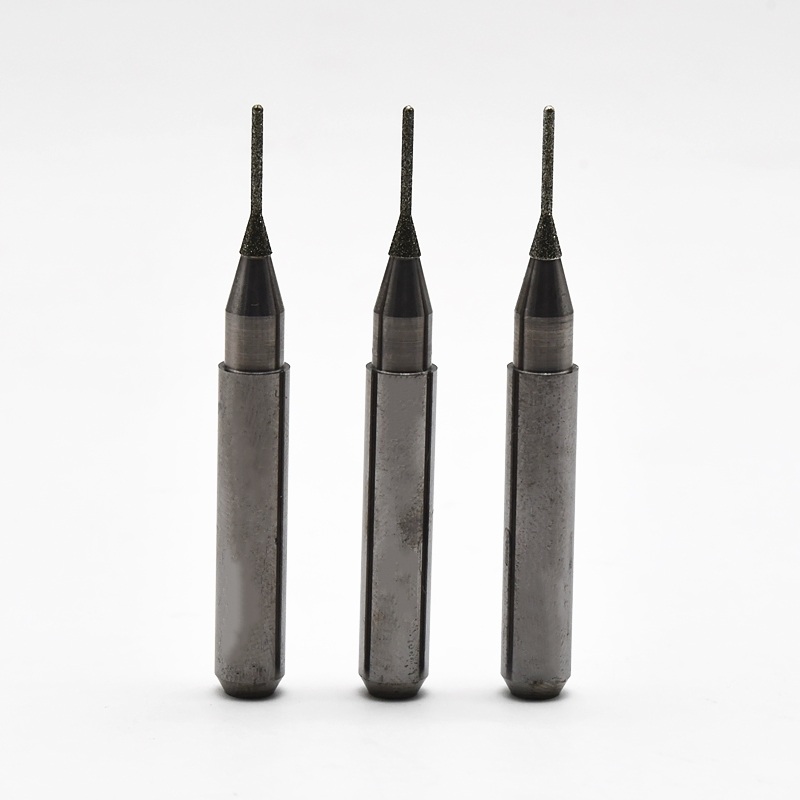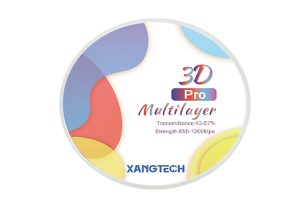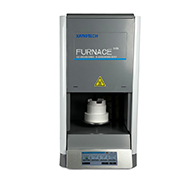What’s CAD/CAM Milling Bur Coating and Why’s It a Big Deal?
Understanding the Role of Coating in Milling Burs
CAD/CAM milling burs are key tools in dental labs and clinics for shaping stuff like zirconia, PMMA and ceramics into spot-on restorations. A big thing that amps up their game is special coatings. These coatings act like a shield on the bur’s surface, cutting down friction during fast milling. They also stop material from sticking to the bur, which can mess up cutting accuracy and restoration quality.
How Does Coating Boost Cutting Power and Lifespan?
Coated milling burs beat uncoated ones by keeping friction heat low during milling. This leads to cleaner cuts and keeps both the tool and the dental material in good shape. Plus, coatings protect the bur’s cutting edges from wearing out, so they stay sharp longer. That means fewer tool swaps, which saves time and cash for dental labs.
What Materials Are Used in Milling Bur Coatings?
The go-to coatings for CAD/CAM milling burs are titanium nitride (TiN), diamond-like carbon (DLC) and zirconium nitride (ZrN). These are picked for their toughness, heat resistance and non-stick vibes. For example, DLC coatings are super hard and slick, making them awesome for cutting tough stuff like zirconia and metal alloys.
How Does Coating Make CAD/CAM Milling Burs Perform Better?
How Does Coating Improve Precision During Milling?
Precision is everything for dental restorations. A top-notch coating keeps the milling bur’s shape solid over time. This ensures your digital designs come out perfect without any slip-ups. Coated burs resist chipping and dulling better than uncoated ones, giving smoother surfaces and finer details—super important for crowns, bridges, or veneers.
How Does a Good Coating Cut Down Wear and Tear?
Uncoated burs get beat up fast by hard materials like zirconia or disilicato di litio. Coatings act like armor against this wear. Our milling bur usually adopts carbide or coating process, with high wear resistance and long service life. This toughness lets coated burs keep going strong without needing constant replacements.
Can Coated Burs Handle Tougher Materials Better?
Yup. Coatings make it easier to cut harder materials by reducing tool wobble and preventing heat damage during fast milling. Jiny milling bur has wide cutting compatibility and is suitable for common dental materials such as zirconium, CrCo alloy, PMMA (polymethyl methacrylate), wax materials, etc. This flexibility is key in labs switching between different materials.
Meet XANGTECH: A Trusted Name in CAD/CAM Milling Burs
Who’s XANGTECH and What Do They Bring to the Table?
We at XANGTECH have over 11 years of know-how making dental lab gear and supplies for modern digital dentistry. With 11 years of experience, Nanyang Liandong Biotechnology Co., Ltd. specializes in dental laboratory materials and equipment, including zirconia blocks, glass ceramics, PMMA discs, milling burs and dental 3D scanners. Our goal is to provide one-stop solutions with tight quality control and solid after-sales support.
Product Highlights: XANGTECH’s Premium Milling Burs
XANGTECH offers a range of milling burs suitable for different materials and applications, including zirconia, ceramic glass, PMMA and metal. Whether you need a bur optimized for roughing zirconia or finishing lithium disilicate restorations with finesse—we’ve got you covered.
Why Go with XANGTECH’s Coated Burs for Your Lab or Clinic?
Steady Performance Across Different Materials
Our coated CAD/CAM milling burs deliver consistent results across all kinds of materials without losing speed or precision. Our milling bur is used to process crowns and bridges, make temporary and permanent restorations and process complex dentures. This versatility makes them perfect for labs juggling different cases daily.
Longer Tool Life with High-Tech Coatings
Thanks to our cutting-edge coating tech on tungsten carbide cores or similar materials, XANGTECH milling burs achieve high-efficiency cutting through optimized design, offering longer tool life while staying sharp—meaning fewer replacements in your workflow.

What Should You Think About When Picking a Coated CAD/CAM Milling Bur?
What Affects a Milling Bur’s Durability?
Durability depends on stuff like coating type, base material (like carbide), how you use it (speed/feed rate), cooling methods and material compatibility. Overloading or using the wrong bur can trash its lifespan, even with a coating.
How Big a Deal Is Compatibility with Your Dental CAD/CAM System?
System compatibility is huge when choosing a CAD/CAM milling bur. Using the wrong tool can lead to meh results or even mess up your machine’s spindle. XANGTECH provides various types of milling burs compatible with different dental milling machines, ensuring smooth integration into your lab’s digital workflow.
What Are the Signs You Need a New Milling Bur?
Look out for louder noise during milling, chipped edges when checked under a magnifying glass, slower cutting, burn marks on surfaces, wonky margins, or error logs from your software saying the tool’s struggling.
How to Make Your Coated CAD/CAM Burs Last Longer
Best Ways to Clean and Maintain Them
Always clean your burs after use with ultrasonic cleaners made for precision tools—don’t use rough brushes that could wreck the coating. Store them in dry spots away from stuff that could cause corrosion.
Lubricate spindle interfaces regularly per manufacturer guidelines to avoid vibrations that dull your tools too soon.
How Can Bad Use Hurt Your Burs?
Using wrong feed rates or milling materials they’re not meant for can wear out—or even break—coated burs fast. Stick to recommended settings from tool makers like us at XANGTECH and your machine’s OEM.
Avoid using worn-out holders or clamps that could make the bur wobble, causing uneven wear on even the toughest coated surfaces.

Domande frequenti
Q: Why are coated milling burs better than uncoated ones?
A: Coated burs cut down on friction heat during milling, which stretches tool life and improves surface finish—key for tricky materials like zirconia or lithium disilicate.
Q: How long do coated milling burs usually last?
A: It depends on use, materials and coating type, but a well-cared-for coated bur can last 2–3 times longer than an uncoated one under the same conditions.
Q: Are XANGTECH milling burs compatible with all major CAD/CAM systems?
A: XANGTECH provides various types of milling burs compatible with different dental milling machines, offering broad compatibility across industry-standard platforms.












